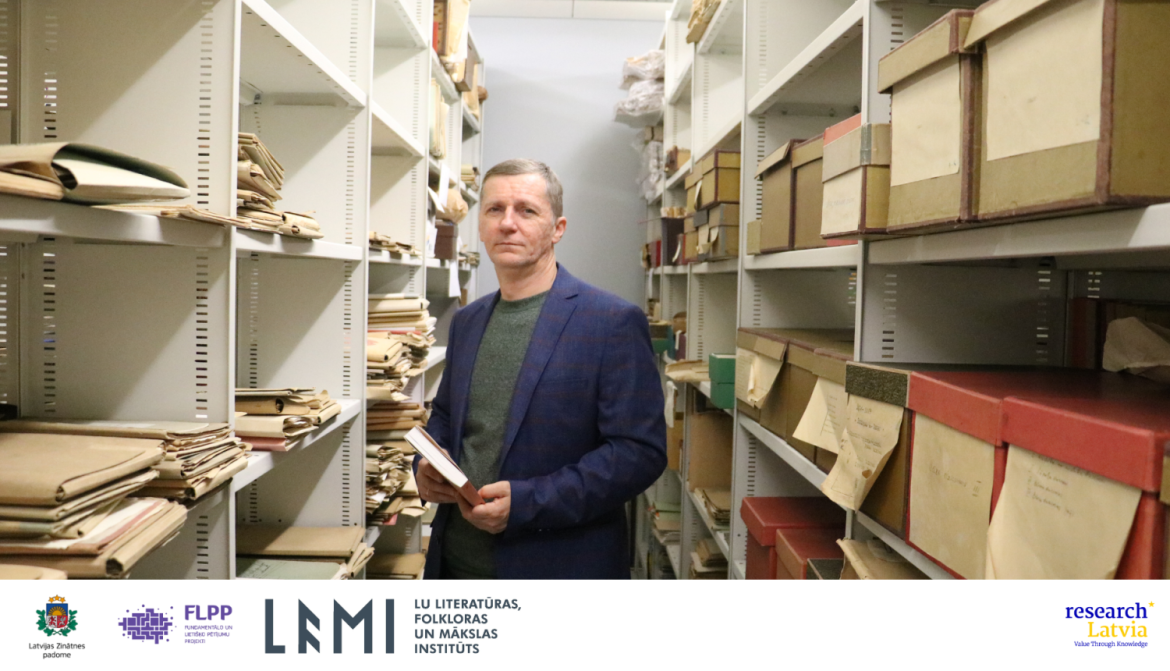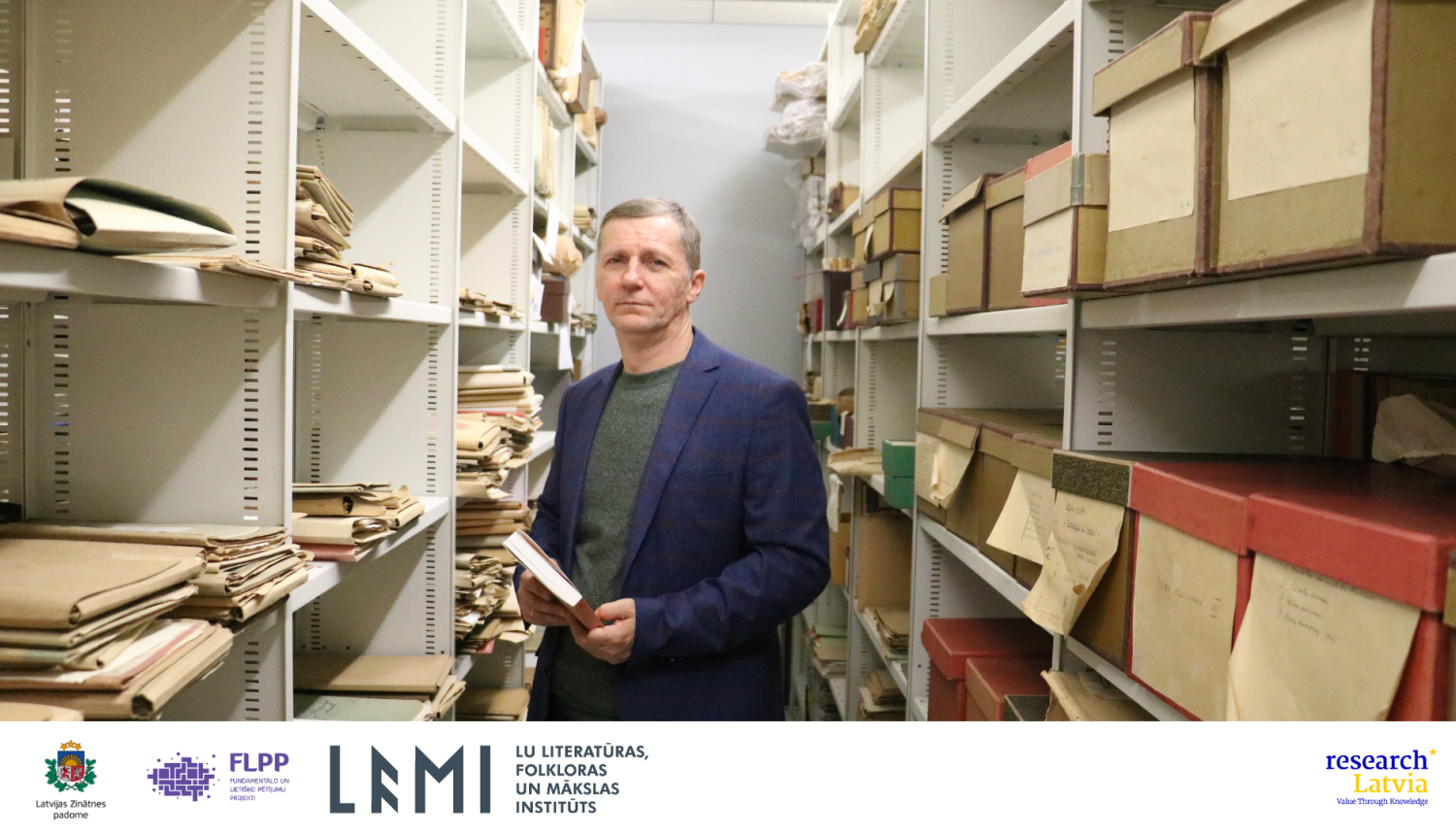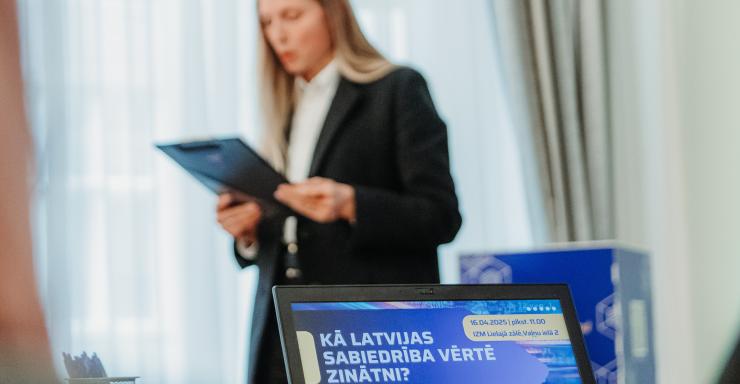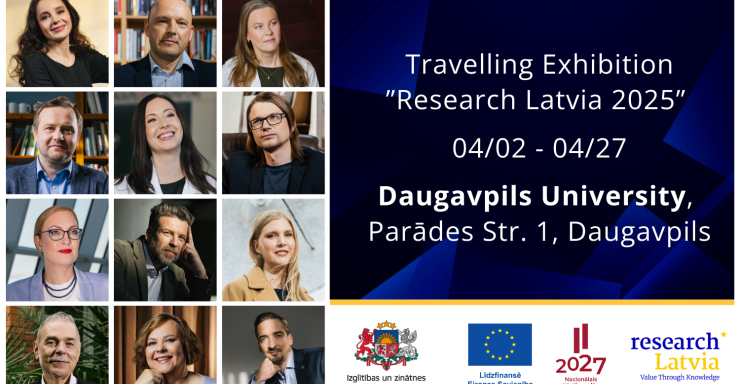Our memories are a valuable layer of cultural heritage that connects the past with the present. Collecting oral folklore is like creating a time capsule that stores stories, legends and traditions passed down from generation to generation. Each of us can become a carrier of this valuable information by sharing our memories, observations and experiences.
In today's folklore, which includes urban legends, internet memes and social media trends, we are actively involved in creating and spreading it. We are both creators and receivers of stories that collectively shape our cultural landscape. This mutual involvement allows us not only to preserve the heritage of the past, but also to create a modern cultural identity.
Today, with the digital footprint becoming more and more pronounced, it is easy to forget the importance of preserving and inheriting intangible cultural heritage as well.
Just as Krišjānis Barons dedicated his life to collecting Latvian folk songs, the researchers of the study "Experience in the city: narratives, memories and heritage of the place" are aware of the need to record and preserve the experiences, memories and stories of modern people.

How and why were people's stories collected?
This project, managed by the Latvian Science Council and implemented by the Institute of Literature, Folklore and Art of the University of Latvia (ILFA), is a modern reflection of Krišjānis Barons' work, where the diversity of contemporary urban folklore and experience is collected and documented. Just like in Barons' time, it is important to acknowledge that each individual is a creator of history, and their experiences are valuable. However, this time, more than just stories were documented – photographs, voices, intonations, video recordings, all of which were compiled in a digital, accessible archive for the people.
This research project was specifically dedicated to documenting the history, culture, and experiences of the residents of the Pārdaugava districts of Riga. The main goals of the project were:
- To collect information on the history of Pārdaugava, from its origins to the present day;
- To document the neighborhood's architecture and the development of the urban environment over time;
- To record residents' memories, stories, and experiences about life in various parts of Pārdaugava;
- To identify and document the area's cultural traditions and events;
- To explore the social and economic life of Pārdaugava residents.
To achieve these goals, researchers employed various methods, including surveys, interviews, storytelling evenings, and analysis of archival materials. Information was gathered about notable individuals, events, and everyday life and traditions in the area.
One of the challenges of the project was actively engaging the residents, which was especially challenging during the COVID-19 pandemic. While many were eager to share their memories and experiences, there were also some initially skeptical individuals. However, through gaining trust and explaining the project's goals, the researchers were able to involve a wide range of people. This soon snowballed, as residents recommended more neighbors and friends with valuable stories to share. Each conversation, each memory was a small piece of the larger Pārdaugava mosaic.
It should be noted that the stories varied across different neighborhoods; Bolderāja, Imanta, and Āgenskalns each had their own unique stories and events. Even though people often "embellish" stories or forget details, the narratives from multiple individuals in the same neighborhood complemented each other and created a broader picture from various time perspectives.
In addition to individual interviews, the researchers organized storytelling evenings, where people could both meet and share their experiences with others. These gatherings became a platform where new connections were made, memories were revived, and history was created together. It is also important to note that stories were not always shared only by seniors. In this study, people of all ages, both residents of Pārdaugava and those who had only been there for a few hours, contributed their experiences.
Furthermore, the researchers dedicated time to archival research, delving into the labyrinths of history. Old maps, photographs, and documents revealed the secrets of the past and helped to understand the development of Pārdaugava over time.
The story as a unifying element, both in the past and the present. The researchers not only gathered information but also formed strong bonds with the residents of Pārdaugava. This mutual collaboration created a special connection that went beyond the boundaries of research. The project became a platform for people to share their memories, discover a shared history, and foster a stronger sense of community.
Through these stories and meetings, the project reached key conclusions:
- Pārdaugava is a valuable part of cultural and historical heritage closely tied to the development of Riga;
- The memories and experiences of the residents are an indispensable part of history that helps to understand the past and shape the future;
- Community involvement is crucial for the successful implementation of cultural heritage preservation projects;
- The use of digital technologies can aid in the preservation and promotion of cultural heritage;
- Such projects enhance cultural diversity and strengthen social cohesion.
Interestingly, some of the researchers already lived in or had lived in Pārdaugava when the project began, one even moved to live in Pārdaugava, and others considered the possibility. The project "pulled in" even researchers for whom it was truly an exciting adventure.
What did these people tell?
The most fascinating part of this study was, of course, the people's stories. These touched on the full spectrum of emotions, here are just a few examples:
One interesting story came from residents’ memories of local shops. They shared tales of long queues for food, the special scent that filled the stores, and how people used to share food with neighbors. These stories reveal how food was not just a necessity, but also a social tool that formed bonds within the community. For example, one resident remembered how much they enjoyed visiting the bakery because it always smelled of freshly baked bread. That smell still lingers in their memory.
Another interviewee shared a more everyday, yet emotionally powerful memory. As a child, they regularly rode the Ikarus bus and had to breathe in the smell of diesel exhaust. That unpleasant sensation stayed with them to this day, serving as a reminder of how even the most mundane daily situations can leave a lasting impression.
Another story came from a woman who, as a child, listened to her grandmother’s stories about the events of the 1905 Revolution in Riga. Her grandmother had been an eyewitness to the tragic events when many people were shot. This story is not only a historical account but also a powerful example of how family memories are passed down through generations. It also emphasizes the importance of preserving these memories.
Many interviewees shared their memories of celebrating holidays in Pārdaugava. While it is often believed that the biggest celebrations happen in the countryside, these stories show that various holidays were also celebrated in the city. People recalled how families gathered for Jāņi (Midsummer), Easter, Christmas, and other holidays, preparing special meals and spending time together.
Now it's time for creative solutions!
At first, one might think that documenting such small, everyday stories is not worth it. However, it is these small fragments of memory that form the historical mosaic. They reflect people's emotional connections to the place, their daily experiences, and cultural peculiarities. These stories are not just historical testimonies, but also works of art that can touch and inspire. The researchers understood that these memories are worth preserving because they are an indispensable part of the history of Pārdaugava. These stories are a valuable resource for researchers, local residents, municipal authorities, and cultural workers.
The researchers not only documented people's stories but also captured the city’s landscape. They photographed streets, buildings, parks, and more, to document the city's changes over time. These photographs serve as visual evidence of the city’s development and allow us to compare the past with the present.
As the project leader, Gatis Ozoliņš, notes, "This project documents the diversity of contemporary urban folklore and experience. Even today, it is important to recognize that every person is a creator of their environment and history, and their experiences are valuable."
Within the project, the researchers held an exhibition showcasing photographs that reflected the stories and environment of Pārdaugava residents. Many of these stories were also published on social media, where local residents recognized their locations and even provided more information about certain objects or people.
This project is just the beginning. The collected stories and memories are not only everyday historical testimonies but also sources of inspiration for artists, writers, and filmmakers. These stories could serve as the basis for films, TV shows, books, and even local tourism routes. Imagine how these fascinating histories could inspire new ideas and create new opportunities!
If you are also interested in these stories and want to learn more about the history and culture of Pārdaugava, we invite you to explore the project's results: https://garamantas.lv/lv/collection/1564706/Pardaugavas-stasti
Together, we can continue to shape the history of Pārdaugava and ensure that these valuable stories are preserved for future generations.
The project "Experience in the City: Narratives, Memories, and Place Heritage" (lzp-2020/1-0096) is being implemented as part of the Fundamental and Applied Research Program. Project is funded by the Latvian Science Council.


